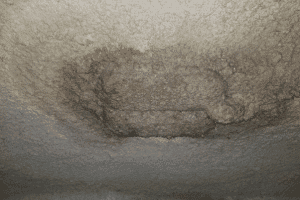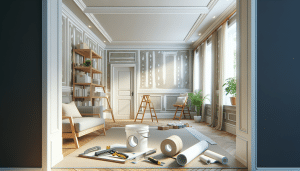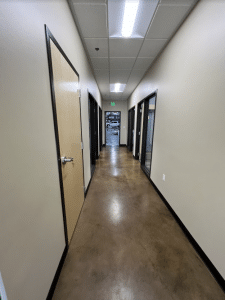Drywall, also known as gypsum board or plasterboard, is a versatile building material widely used for its smooth and clean finish. However, like any construction material, it’s not immune to imperfections. Cracks, dents, and crevices can appear over time due to various factors. In this guide, brought to you by Utah Drywall and Repair, we’ll explore common drywall imperfections and how to effectively deal with them to maintain the aesthetic appeal of your walls and ceilings.
Drywall is a popular choice for interior walls and ceilings due to its affordability and versatility. However, it’s not impervious to wear and tear, and over time, you may notice imperfections. Understanding how to identify and address these issues can help you maintain the aesthetic appeal of your living or working space.
Contents
Common Drywall Imperfections
1. Cracks
- Cause: Cracks can result from settling of the building, temperature fluctuations, or stress on the drywall.
2. Dents and Holes
- Cause: Dents and holes can occur due to accidental impacts, furniture bumps, or improper installation.
3. Popped Nails or Screws
- Cause: Popped nails or screws happen when the fasteners lose grip on the drywall and push through the surface.
4. Bubbles and Blisters
- Cause: Bubbles and blisters can form when air gets trapped under the drywall tape or joint compound during installation.
Fixing Drywall Imperfections
1. Cracks
- Solution: Fill small cracks with joint compound using a putty knife. For larger cracks, use mesh tape before applying joint compound.
2. Dents and Holes
- Solution: Fill dents and small holes with joint compound or patching plaster. Larger holes may require a patch.
3. Popped Nails or Screws
- Solution: Reattach the drywall to the framing with a new screw or nail. Cover the area with joint compound and sand it smooth.
4. Bubbles and Blisters
- Solution: Carefully cut away the affected area and remove any loose material. Apply a new layer of joint compound, smooth it, and sand it when dry.
Preventing Future Imperfections
- Properly secure drywall to the framing during installation to prevent popped nails or screws.
- Use appropriate anchors and supports for heavy items to avoid creating dents or holes.
- Apply drywall tape and joint compound meticulously to prevent bubbles and blisters.
- Address any structural issues, like settling or temperature-related movement, that can lead to cracks.
When to Seek Professional Help
While many minor drywall imperfections can be fixed with DIY methods, some situations may require professional intervention. Seek professional help if:
- The imperfections are extensive or structural.
- You’re unsure about the cause of the imperfections.
- You’re not confident in your ability to repair them yourself.
Conclusion
Drywall imperfections are a common occurrence, but they don’t have to be a permanent eyesore. With the right knowledge and tools, you can effectively address cracks, dents, holes, and other issues to maintain the beauty and integrity of your interior walls and ceilings. For professional drywall repair and advice, contact Utah Drywall and Repair at 801-406-6350 or visit our website drywallrepairutah.com. We’re here to help you achieve flawless walls and ceilings in your home or commercial space.




